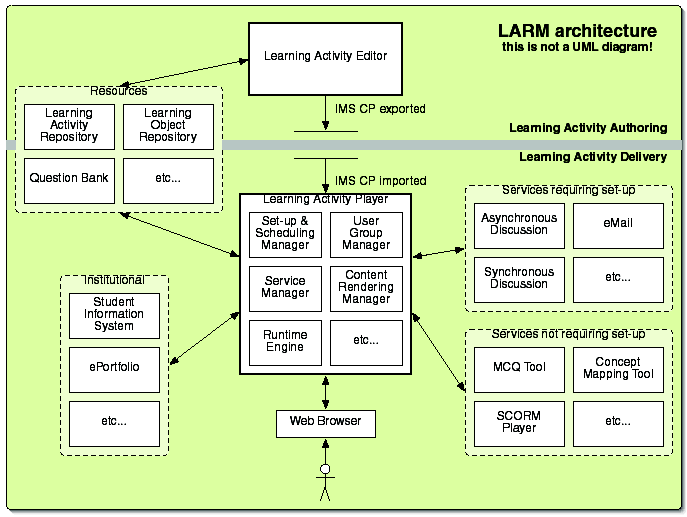Learning activity reference model
Definition
Learning Activity Reference Model (LARM) was an attempt to define a general reference model for learning activities, in particular with relation to learning design and associated technical frameworks. LARM was developed as part of Learning Activity Design in Education (LADIE), itself part of e-Learning Framework. This project is over now, but some ideas developed will probably enter into the design of new kinds of service-oriented e-learning architectures.
See also e-framework, a follow project in the same spirit.
- Why a reference model ?
By reference model the authors mean “an unambiguous means of sharing a common understanding of a precisely defined domain among people for whom the reference model definition may be the only point of contact.” (Learning Activity Reference Model, retrieved 12:04, 26 February 2009 (UTC)) Target population for such models can be:
- Teachers and practitioners: To formulate activities in a form that can be stored and exchanged
- Implementers, learning technologists: To build what the teacher wants using their institutions existing technology
- Vendors and developers: To create systems that conform to a service oriented approach to make the implementers lives easier
The model
LARM attempts to define a wide area of learning domains, e.g. they refer to the DialogPlus taxonomy of activities. It also attempts to define a vendor and ecuational modelling language independant orchestration, e.g, support IMS LD, PBEL, LAMS, traditional IMS CP/Scorm 1.2 based LMS, etc.
Links
- The E-learning framework
- Learning Activity Reference Model (PPT slides by Charles Duncan and Ed Barker, 2004.
